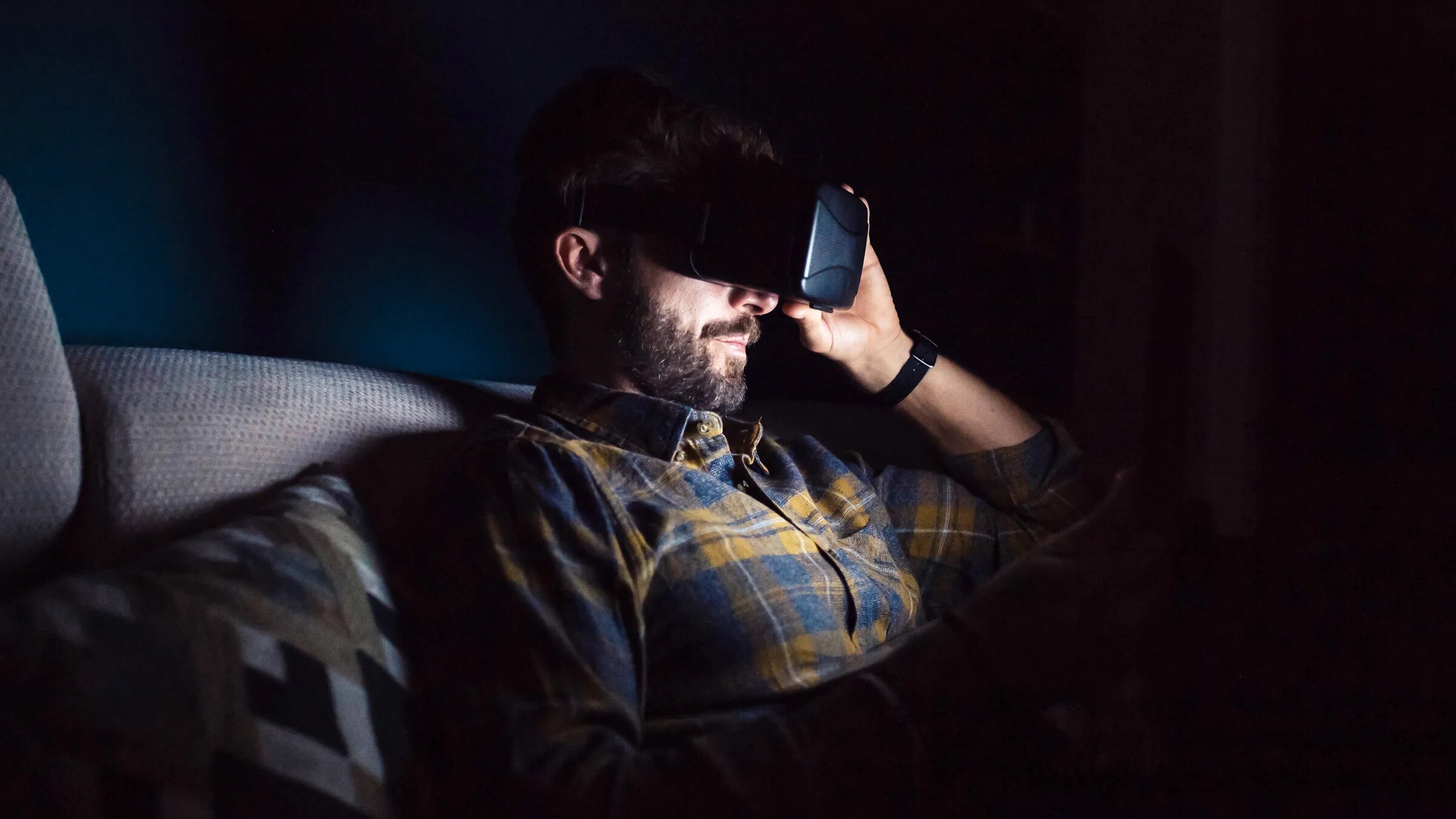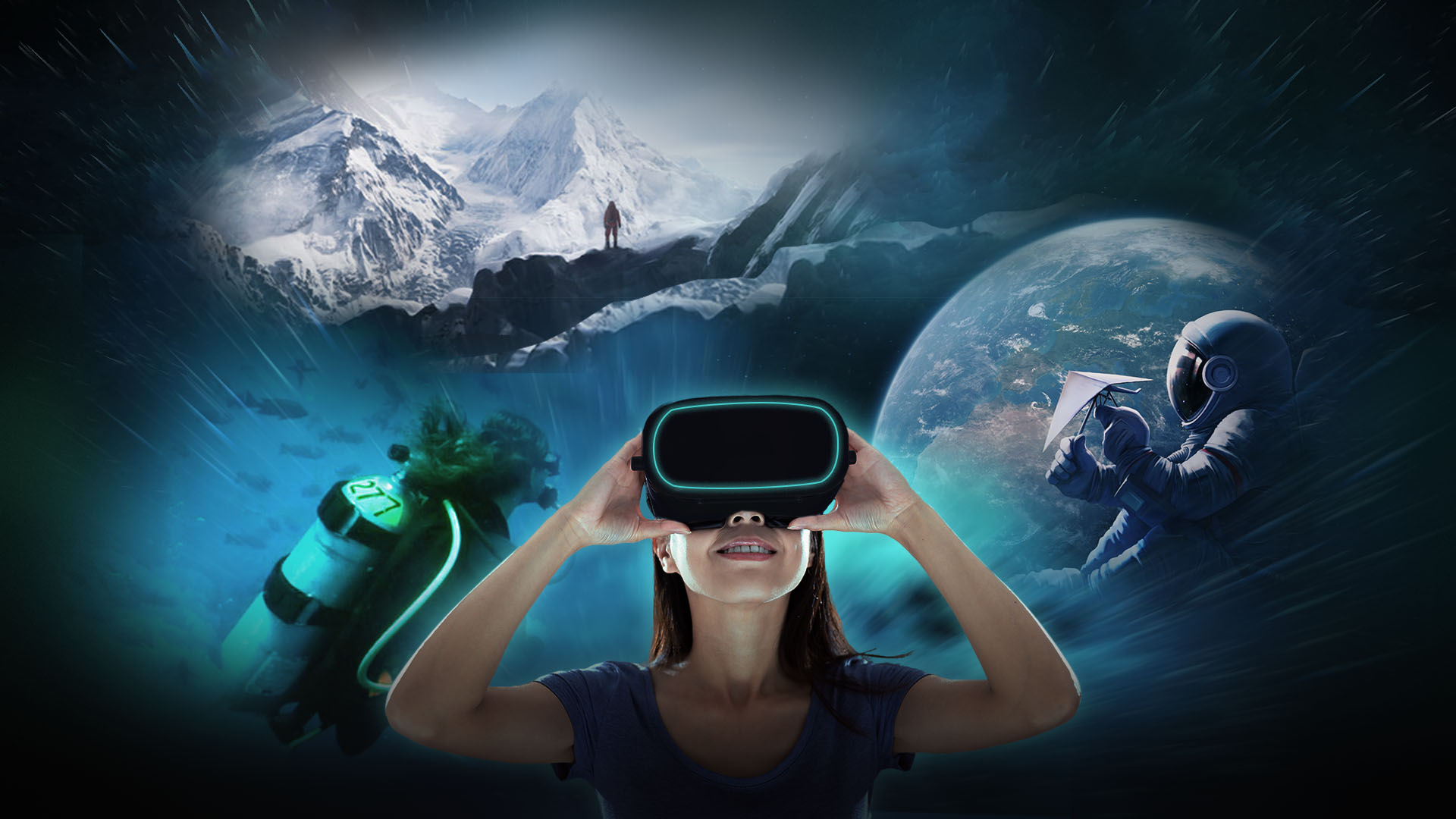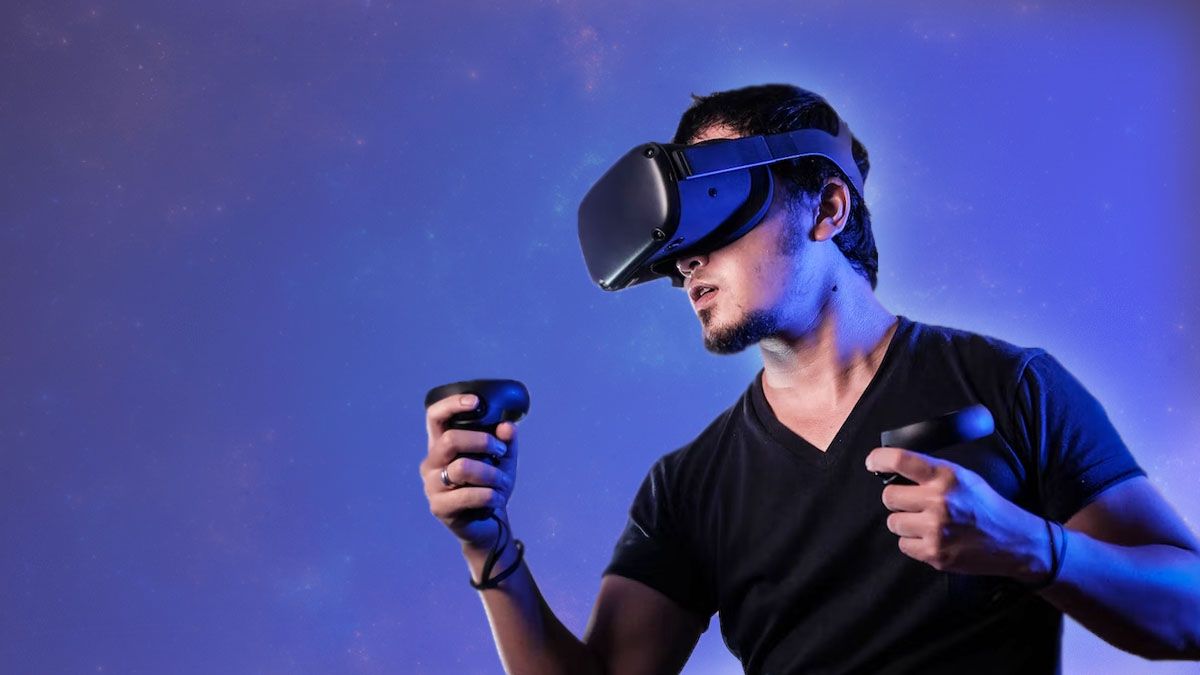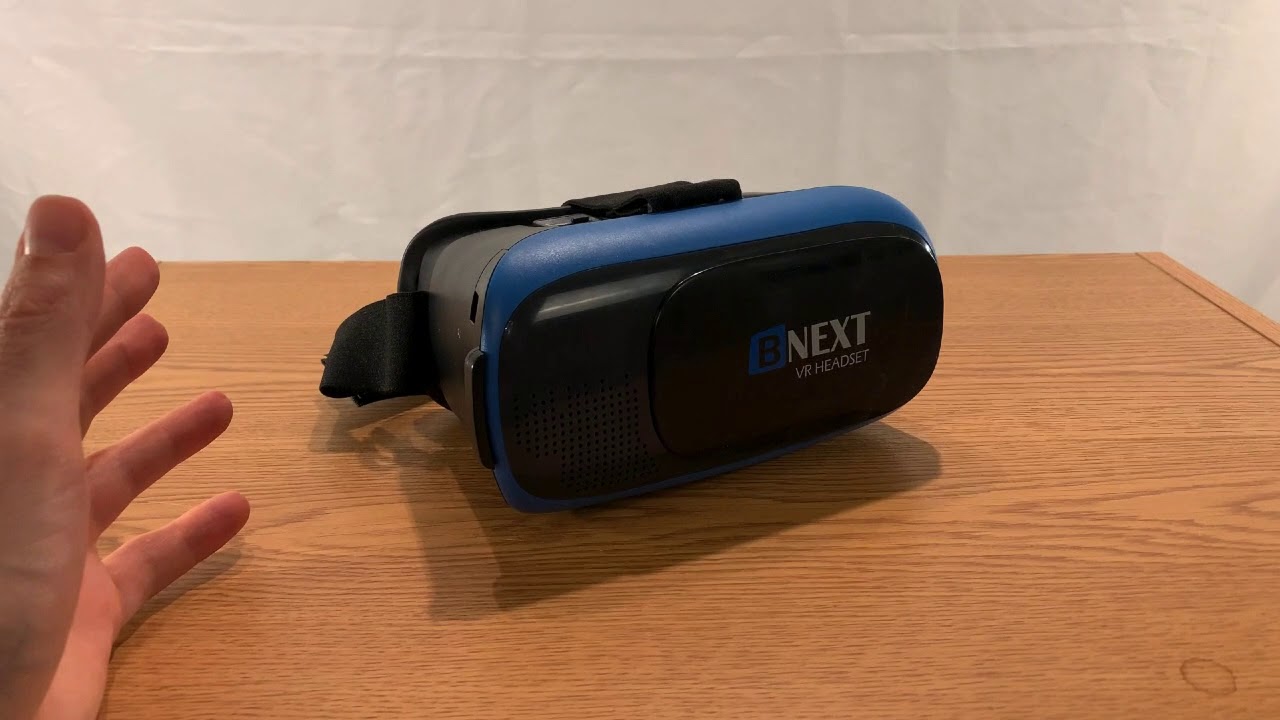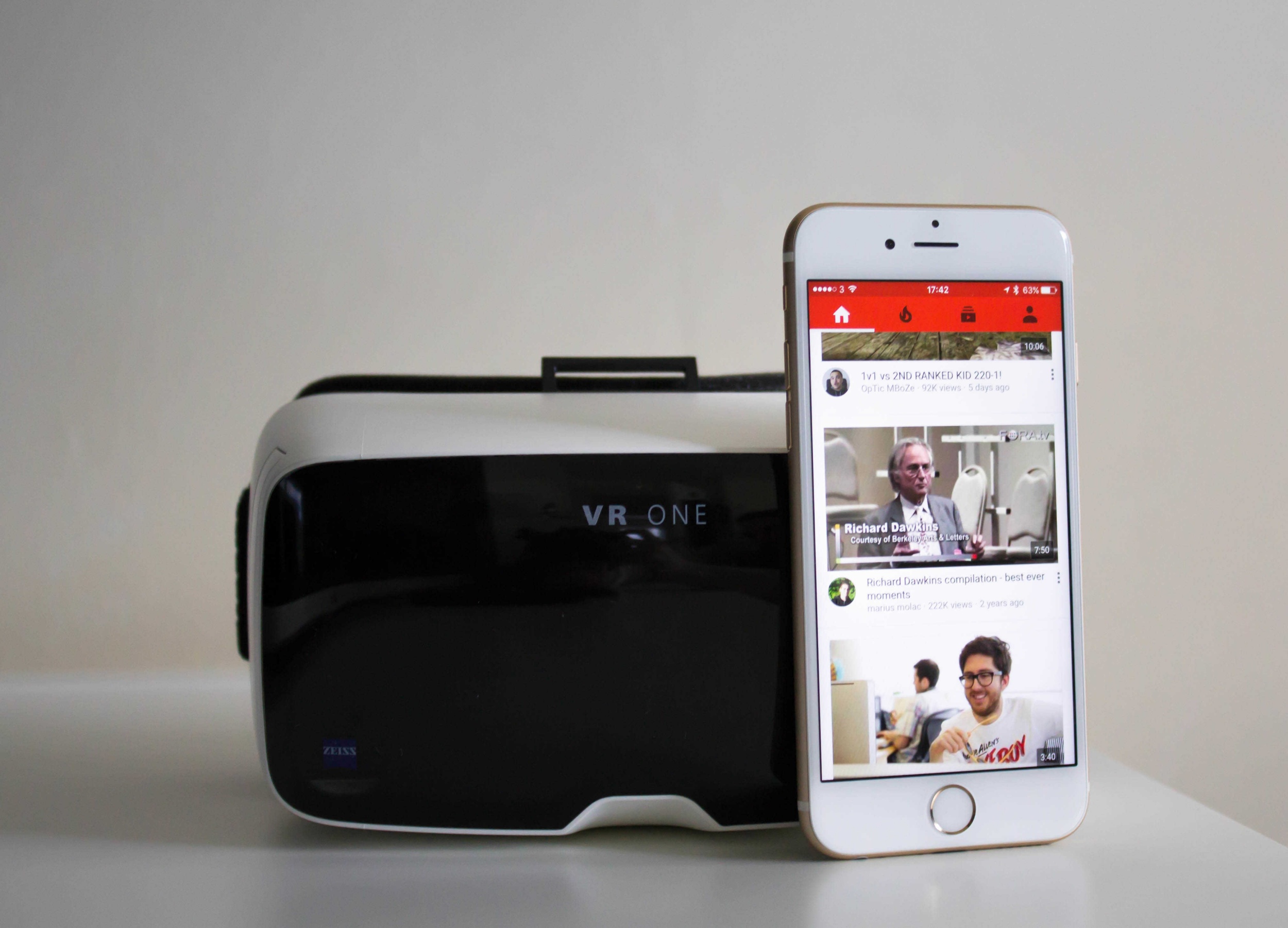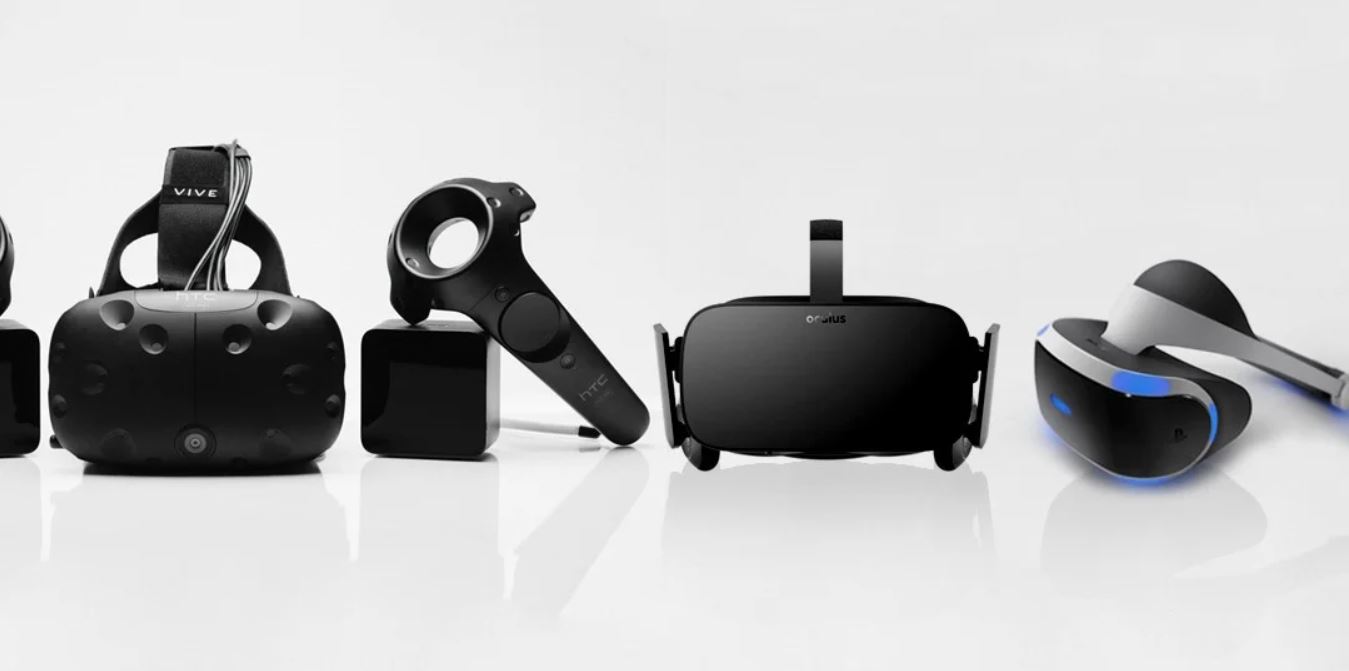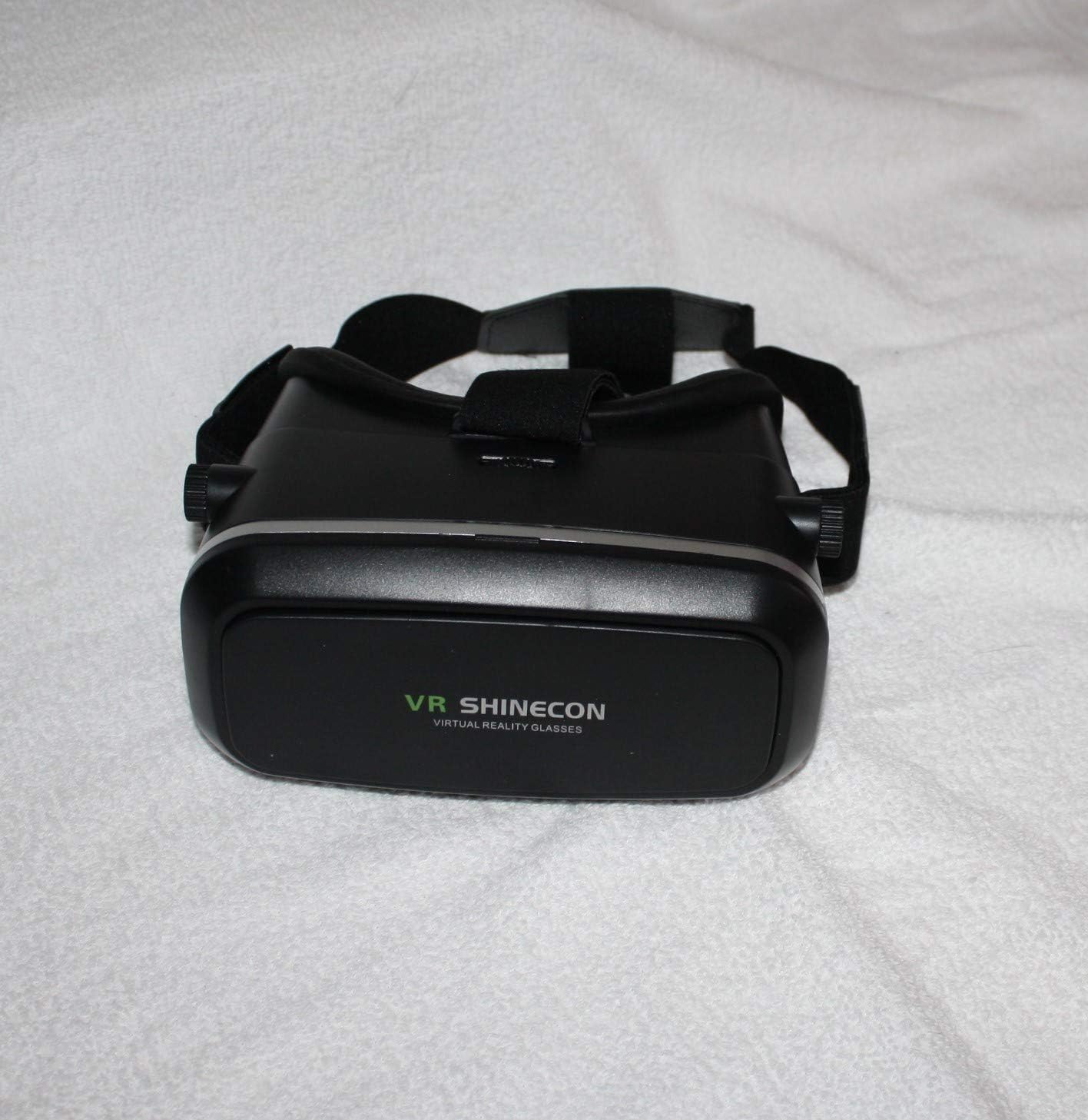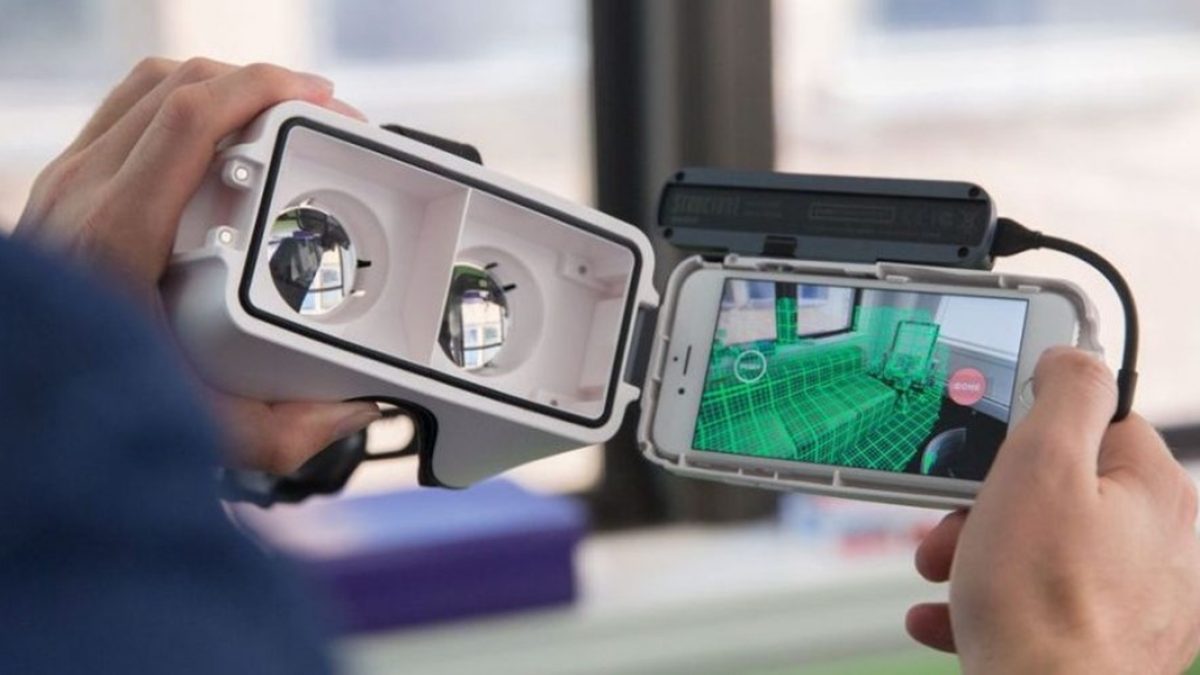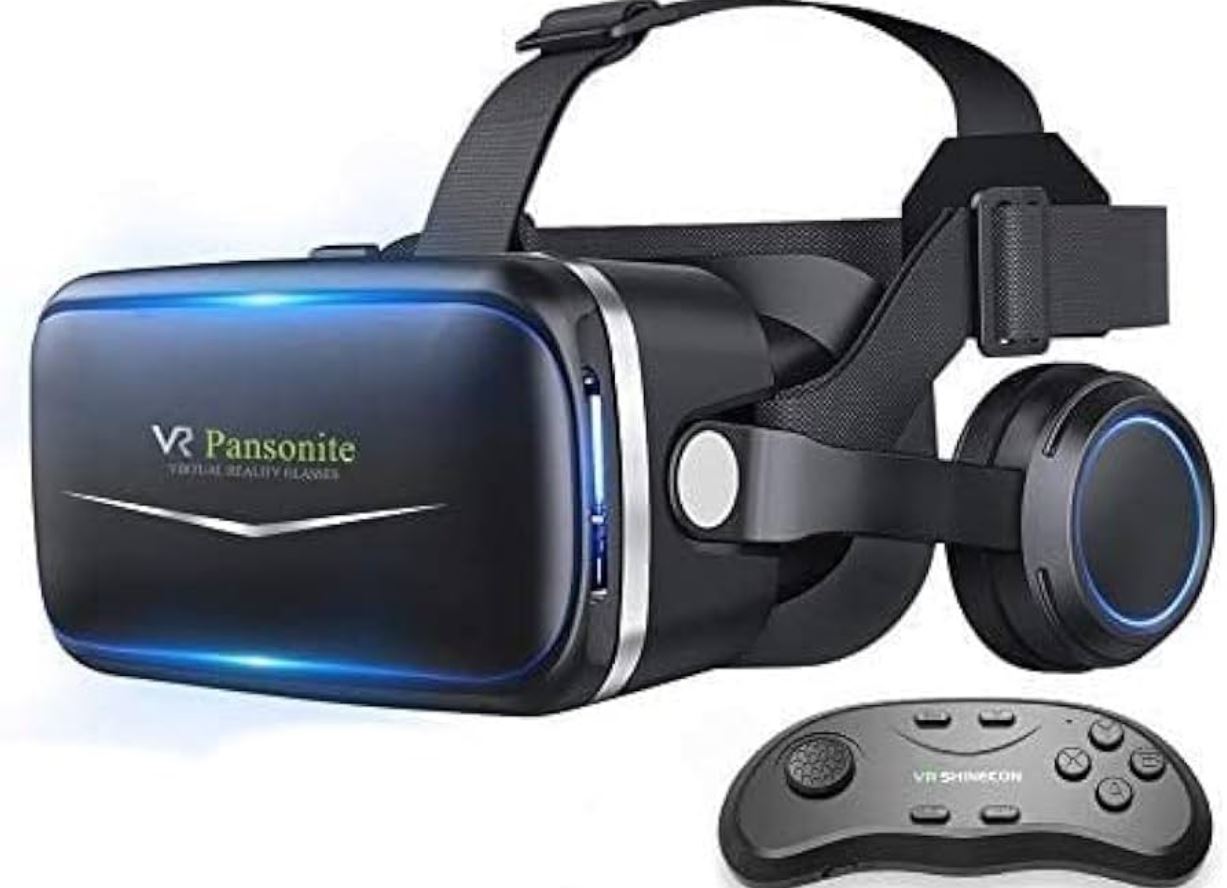Introduction
Welcome to the exciting world of virtual reality (VR) movie watching! With the advent of VR technology, movie enthusiasts can now immerse themselves in their favorite films like never before. This innovative technology transports you to a virtual cinema, where you can enjoy a larger-than-life movie experience right from the comfort of your own home.
VR headsets have revolutionized the way we consume and interact with media. By combining high-quality visuals, surround sound, and 360-degree viewing, VR movies provide a truly immersive and captivating entertainment experience.
Whether you’re a fan of action-packed blockbusters, gripping dramas, or mind-bending sci-fi flicks, a VR headset can take your movie-watching experience to the next level. Imagine being able to step directly into the world of your favorite film, feeling as if you’re right there alongside the characters.
In this guide, we will explore everything you need to know about watching movies with a VR headset. We’ll discuss the different types of VR headsets available, how to choose the right one for your needs, and provide step-by-step instructions on setting up your VR headset. Additionally, we’ll cover how to download and install a VR movie app, find movies to watch, adjust settings for optimal viewing, and share some helpful tips and tricks to enhance your VR movie-watching experience.
So, put on your VR headset and get ready to embark on a cinematic adventure like no other. Sit back, relax, and let the magic of virtual reality transport you into a whole new world of movie-watching.
What is a VR Headset?
A VR headset, short for virtual reality headset, is a device that allows users to experience virtual reality content by wearing it on their head. These headsets are equipped with advanced technology that creates an immersive sensory experience, transporting users to a virtual world.
At its core, a VR headset consists of a combination of screens, lenses, and sensors. The screens display virtual content in a way that appears three-dimensional to the user, while the lenses help focus and reshape the images to create a realistic depth perception. The sensors track the movement of the user’s head, allowing them to look around and interact with the virtual environment.
VR headsets can be connected to a computer or a gaming console, depending on the specific model. Some headsets are standalone devices that have their own built-in computing capabilities and storage, while others require external devices for processing and storage.
One of the key features of VR headsets is the ability to provide a 360-degree field of view. This means that users can turn their heads in any direction and see the virtual world surrounding them, just as they would in the real world. This creates a highly immersive experience that can be used for various applications, including gaming, virtual tours, educational simulations, and of course, watching movies.
VR headsets also often come with adjustable straps and cushions to ensure a comfortable fit while wearing them. They may have built-in headphones or allow for the connection of external audio devices for an enhanced audio experience. Some models even include additional features such as motion controllers, which enable users to interact with virtual objects and environments using their hands.
Overall, a VR headset is a gateway to a whole new dimension of entertainment and exploration. By putting on a VR headset, users can transcend the boundaries of the physical world and dive into immersive virtual experiences.
Types of VR Headsets
There are several types of VR headsets available on the market, each with its own unique features, capabilities, and compatibility requirements. Understanding the different types can help you choose the right VR headset for your movie-watching needs.
1. Tethered VR Headsets: Tethered VR headsets require a connection to a computer or gaming console to function. They deliver high-quality, immersive experiences by leveraging the processing power of the connected device. Examples of tethered VR headsets include the Oculus Rift and the HTC Vive.
2. Standalone VR Headsets: Standalone VR headsets do not require any external devices. They have built-in computing power and storage, providing a hassle-free and portable VR experience. These headsets are ideal for on-the-go use and are often more accessible in terms of price. The Oculus Quest and the Lenovo Mirage Solo are popular standalone VR headsets.
3. Mobile VR Headsets: Mobile VR headsets are designed to work in conjunction with smartphones. They use the smartphone’s display and sensors to create the virtual reality experience. Simply place your smartphone into the headset and immerse yourself in VR. Examples of mobile VR headsets include the Samsung Gear VR and Google Cardboard.
4. PC-Compatible VR Headsets: These headsets are designed specifically for use with personal computers. They offer high-quality graphics and tracking capabilities, making them suitable for gamers and those seeking a premium VR experience. The Valve Index and the HP Reverb G2 are popular PC-compatible VR headsets.
5. Console VR Headsets: Console VR headsets are optimized for gaming consoles such as the PlayStation 5. These headsets offer seamless integration with the console and provide an immersive gaming experience. The PlayStation VR is an example of a console VR headset.
When choosing a VR headset for movies, consider factors such as comfort, resolution, audio quality, tracking capabilities, and content compatibility. Additionally, be mindful of the hardware requirements and setup process associated with each type of headset.
With the variety of VR headsets available, there’s a perfect option for every movie lover looking to step into the world of virtual reality.
How to Choose the Right VR Headset for Movies
Choosing the right VR headset for movies can greatly enhance your movie-watching experience. To help you make an informed decision, here are some key factors to consider:
1. Comfort: Since you’ll be wearing the VR headset for extended periods, comfort is crucial. Look for headsets with adjustable straps, cushioning, and a weight distribution that suits your preferences.
2. Resolution: Higher resolution displays provide a more immersive and detailed visual experience. Look for headsets with a high resolution, ideally above 1080p, for sharper and more vibrant movie viewing.
3. Field of View: A wide field of view enhances the sense of immersion. Look for headsets with a field of view of 100 degrees or more for a more encompassing movie-watching experience.
4. Audio Quality: Quality audio can greatly enhance the movie-watching experience. Look for headsets with built-in headphones or the ability to connect external audio devices for immersive sound.
5. Tracking Capabilities: Ensure the headset offers precise and responsive head-tracking, allowing you to look around smoothly and seamlessly within the virtual environment.
6. Content Compatibility: Check if the VR headset is compatible with the movie apps and platforms you intend to use. Some headsets have a dedicated app store or specific content partnerships.
7. Controller Options: Consider whether you prefer a VR headset with built-in controls or ones that require separate motion controllers. Choose a control scheme that aligns with your preferences for navigating movie apps and interacting with virtual environments.
8. Budget: Set a budget range that suits your financial situation. Prices for VR headsets can vary significantly, with higher-end tethered headsets typically costing more than standalone or mobile VR options.
9. Reviews and Recommendations: Research and read reviews from experts and users to get a sense of the strengths and weaknesses of different VR headsets. Pay attention to factors such as comfort, visual quality, audio performance, and overall user satisfaction.
By considering these factors, you’ll be able to find a VR headset that meets your specific movie-watching preferences and provides an immersive and enjoyable experience.
Setting Up Your VR Headset
Once you have chosen the perfect VR headset for movies, it’s time to set it up and get ready for an immersive movie-watching experience. Here’s a step-by-step guide to help you set up your VR headset:
1. Read the Instructions: Start by carefully reading the user manual or setup guide provided by the manufacturer. This will familiarize you with the specific setup process and any special instructions for your particular VR headset model.
2. Charge the Headset: If your VR headset is battery-powered, ensure that it is fully charged before use. Follow the manufacturer’s instructions for charging, as different headsets may have different charging methods.
3. Install Necessary Software: Depending on the VR headset you have, you may need to install specific software or drivers on your computer or mobile device. Visit the manufacturer’s website and download the required software to ensure compatibility and optimal performance.
4. Connect Cables and Sensors: If you are using a tethered VR headset, connect the necessary cables to your computer or gaming console. Ensure that the headset is properly connected and secured. If there are any external sensors or cameras included with your VR headset, follow the instructions to set them up in the optimal position.
5. Adjust the Headset: Put on the VR headset and adjust the straps for a comfortable fit. Make sure that the display is positioned correctly, and the lenses are aligned with your eyes. Most headsets have adjustable IPD (interpupillary distance) settings to match your eye spacing.
6. Set Up Audio: If your VR headset has built-in audio, ensure that it is properly positioned and aligned with your ears. If you’re using external headphones or speakers, connect them to the appropriate audio ports on the VR headset or your computer/console.
7. Calibrate and Test: Follow the on-screen prompts to calibrate the VR headset and sensors. This step is important to ensure accurate head-tracking and a smooth movie-watching experience. Take the time to properly adjust the positioning and alignment of the headset until it feels comfortable.
8. Update Firmware: Check for any available firmware updates for your VR headset. Keeping the firmware up to date will ensure that you have access to the latest features and improvements.
9. Explore the VR Environment: Once the setup is complete, take some time to explore the virtual environment, navigate through menus, and get familiar with the user interface. This will help you navigate movie apps and settings more efficiently when it comes time to watch movies.
Following these steps will allow you to set up your VR headset properly and ensure a seamless and enjoyable movie-watching experience. Now that your VR headset is ready, it’s time to dive into the virtual world of movies!
Downloading and Installing a VR Movie App
Once you have your VR headset set up, the next step is to download and install a VR movie app. These apps provide access to a wide range of movies and immersive video content specifically optimized for virtual reality. Here’s how to get started:
1. Research VR Movie Apps: Start by researching different VR movie apps available for your specific VR headset. Check the manufacturer’s recommended apps or browse through app stores dedicated to VR content. Read reviews, consider features, and explore the available movie library to find the app that best suits your movie-watching preferences.
2. Access the App Store: On your VR headset, access the app store or marketplace associated with your VR platform. This could be an app store built into your VR headset, a separate app store accessible through a computer or smartphone, or a dedicated VR app marketplace.
3. Browse and Search: Use the app store’s browse and search features to find VR movie apps. Look for apps that offer a diverse selection of movies across different genres. Check for compatibility with your VR headset and ensure the app has received positive user reviews.
4. Download and Install: Once you have found a VR movie app, select it and follow the on-screen prompts to download and install the app onto your VR headset. The download and installation process may take some time, depending on your internet connection and the size of the app.
5. Launch the App: After the installation is complete, locate the VR movie app on your VR headset’s menu or home screen. Select the app to launch it and enter into the immersive world of virtual movie-watching.
6. Sign In or Create an Account: Upon launching the VR movie app, you may be prompted to sign in or create an account. Follow the instructions provided by the app to log in or set up a new account. This step may be necessary to access the full range of features and movie content.
7. Explore Movie Selection: Once you are signed in, explore the movie library within the VR movie app. Browse through categories, search for specific movies, or discover new releases and recommended films. Some VR movie apps also offer curated playlists or 360-degree movie experiences.
8. Download Movies: To watch movies with your VR headset, you may need to download them for offline viewing. Select the movie you want to watch, follow any prompts to download it to your VR headset’s storage, and wait for the download to complete. Large files may take longer to download, so ensure you have enough storage space available.
9. Enjoy the VR Movie Experience: After downloading a movie, navigate to your VR movie app’s viewing section. Put on your VR headset, select the downloaded movie, and embark on an immersive movie-watching experience that transports you into a virtual cinema.
By following these steps, you’ll be able to download and install a VR movie app onto your VR headset, unlocking a world of captivating movies and immersive entertainment at your fingertips.
Exploring the VR Movie App Interface
Once you have downloaded and installed a VR movie app on your headset, it’s time to explore its interface and discover its features. While each app may have a slightly different interface design, there are some common elements and functionalities to look out for:
1. Main Menu: The main menu serves as the starting point of the app. It may display options such as “Featured,” “Browse,” “Search,” and “My Movies.” This menu allows you to navigate through the app’s content and access various sections.
2. Movie Library: The movie library is where you’ll find the available movies and video content. Depending on the app, movies may be organized by genre, popularity, release date, or other categories. You can browse through the library to find movies that interest you.
3. Search Function: To quickly find a specific movie, look for a search function in the VR app. This allows you to enter keywords or the title of the movie you want to watch and retrieve relevant search results.
4. Movie Details: When you select a movie from the library or search results, a detailed page for that movie will appear. This page usually includes information such as the movie’s synopsis, cast, duration, and user ratings. It may also provide trailers or previews to give you a glimpse of the movie.
5. Playback Controls: Once you’ve selected a movie to watch, the playback screen will display playback controls. These controls typically include options to play, pause, rewind, fast forward, adjust volume, and toggle subtitles, if available.
6. Virtual Cinema Environment: VR movie apps often provide a virtual cinema environment as the backdrop for your movie-watching experience. This can simulate being inside a movie theater, complete with a large screen, comfortable seating, and ambient lighting.
7. Settings: Look for a settings section within the app where you can customize your movie-watching experience. This may include options to adjust playback settings, audio preferences, subtitle settings, and visual enhancements.
8. My Movies or Library: Some VR movie apps have a dedicated section for your downloaded or purchased movies. This area allows you to view and manage your movie collection, easily access previously watched movies, and organize your favorites.
9. Social and Community Features: VR movie apps may also offer social and community features, such as the ability to share movie recommendations, leave reviews or ratings, follow other users, and participate in discussions or forums related to movies and virtual reality.
By exploring the VR movie app interface, you’ll become familiar with its layout, functionality, and available features. This will enable you to navigate the app with ease, discover exciting movies, and fully immerse yourself in the virtual movie-watching experience.
Finding and Downloading Movies for VR
Once you have familiarized yourself with the interface of your VR movie app, it’s time to find and download movies to enjoy in virtual reality. Here’s a step-by-step guide to help you find and download movies for your VR headset:
1. Browse the Movie Library: Start by exploring the movie library within the VR movie app. Browse through different genres, categories, or featured movies to discover titles that interest you. Take your time to explore and look for movies specifically labeled as VR or 360-degree experiences.
2. Utilize Search Functionality: If you have a specific movie in mind, use the search function within the VR movie app. Enter the movie’s title or relevant keywords to find search results that match your query. This can be a quick way to locate a particular movie within the app’s vast collection.
3. Read Movie Details: When you come across a movie that catches your interest, click on it to access the movie’s details page. Read the synopsis, check the duration, and look for any additional information provided, such as viewer ratings and reviews. Watching trailers or previews can also help you decide whether the movie aligns with your preferences.
4. Select Download Option: Once you have chosen a movie to watch, find the download option within the VR movie app’s interface. It may be located on the movie’s details page or in the playback controls when the movie is selected. Click on the download button to initiate the movie download process.
5. Manage Downloads: Some VR movie apps allow you to manage your movie downloads. Look for a downloads section within the app where you can monitor the progress of ongoing downloads, view completed downloads, and manage your downloaded movie library.
6. Consider Storage Space: Before downloading a movie, ensure that you have sufficient storage space on your VR headset. Movies, especially those in high-quality VR formats, can require significant storage capacity. Delete unnecessary files or movies from your device to free up space if needed.
7. Wait for the Download: Depending on the size of the movie and the speed of your internet connection, the download process may take some time. Be patient and let the movie fully download before attempting to play it to avoid interruptions or buffering issues during playback.
8. Access Downloaded Movies: Once a movie has finished downloading, it will typically be saved in your VR movie app’s library or in a designated downloads section. Locate the downloaded movie within the app’s interface to access and watch it whenever you’re ready.
9. Enjoy the VR Movie Experience: Put on your VR headset, open the VR movie app, and select the downloaded movie to enjoy an immersive and captivating movie-watching experience in virtual reality.
By following these steps, you’ll be able to find, download, and enjoy a wide range of movies specifically optimized for VR. Sit back, relax, and let the magic of virtual reality transport you into a whole new world of movie-watching.
Adjusting Settings for a Better Movie Watching Experience
To enhance your movie watching experience with your VR headset, it’s important to adjust the settings to suit your preferences and optimize the visuals and audio. Here are some settings you can adjust for a better VR movie watching experience:
1. Display Settings: Check the display settings within your VR movie app or headset to adjust the brightness, contrast, and color saturation. These settings can help enhance image quality and ensure the visuals are crisp and vibrant.
2. IPD (Interpupillary Distance) Adjustment: If your VR headset supports IPD adjustment, make sure to set it correctly. This adjustment ensures that the distance between the lenses matches your eyes’ spacing, enabling a more comfortable and immersive viewing experience.
3. Audio Settings: Access the audio settings within the VR movie app or headset to adjust the volume, balance, and audio output options. You can customize the audio experience based on your preference for headphone or speaker audio output.
4. Subtitle Options: If subtitles are available for the movie you’re watching, check the subtitle settings to choose the language, font size, and position. Adjusting the subtitles to your preferred settings can enhance the clarity of dialogue and make the movie-watching experience more enjoyable.
5. Comfort Settings: Some VR movie apps offer comfort settings that allow you to adjust factors such as motion blur, field of view, and comfort vignette. Experiment with these settings to find a balance that minimizes discomfort or latency and ensures a smooth and comfortable viewing experience.
6. Playback Settings: Depending on the VR movie app, you may have access to playback settings such as rewind, fast forward, and playback speed adjustment. These settings can be useful for quick navigation or adjusting the movie’s pace to your liking.
7. Environment Settings: Explore environment settings within your VR movie app that enable you to customize the virtual cinema environment. Adjust the seating position, screen size, or ambient lighting to create the perfect movie-watching atmosphere.
8. Headset Adjustments: Check if your VR headset offers individual headset adjustments, such as strap tightness or lens distance. These fine-tuning adjustments can significantly improve comfort and image clarity during the movie-watching experience.
9. Experiment and Personalize: Every viewer has unique preferences, so don’t be afraid to experiment with different settings to find what works best for you. Take the time to adjust and fine-tune the settings until you are satisfied with the overall movie-watching experience.
By adjusting these settings, you can personalize your VR movie-watching experience and ensure optimal visuals, audio, and comfort. Take advantage of the flexibility provided by VR technology to tailor your movie experience to suit your preferences and enjoy the magic of virtual reality cinema.
Tips and Tricks for Watching Movies with a VR Headset
Watching movies with a VR headset can be an immersive and captivating experience. To make the most out of your virtual reality movie-watching sessions, here are some tips and tricks to enhance your enjoyment:
1. Choose the Right Environment: Experiment with different virtual cinema environments within your VR movie app. Opt for a setting that replicates your ideal movie-watching experience, whether it’s a luxurious theater or a cozy living room.
2. Create a Comfortable Setup: Ensure you are seated in a comfortable position, and adjust the headset’s straps and padding for a secure and snug fit. Take breaks if you start to feel any discomfort or eye strain during longer movie sessions.
3. Minimize Distractions: Find a quiet and well-illuminated space to watch movies with your VR headset. Minimize external distractions, such as turning off notifications on your phone or computer, to fully immerse yourself in the movie experience.
4. Use Headphones or Quality Speakers: For an immersive audio experience, use high-quality headphones or speakers. Good audio enhances the movie’s atmosphere and allows you to immerse yourself fully in the virtual world created by the VR movie.
5. Take Advantage of 3D and 360-Degree Movies: Explore a diverse range of movies that offer 3D or 360-degree viewing experiences. These films provide a heightened sense of depth and can make you feel like you’re truly a part of the movie’s world.
6. Adjust the Playback Speed: Some VR movie apps allow you to adjust the playback speed. You can increase the speed to catch up on slower-moving movies or decrease it for a more leisurely viewing experience. Find the pace that suits your preferences.
7. Share the Experience: Invite friends or family members to join you for a group movie-watching session in virtual reality. Some VR movie apps enable multi-user experiences, allowing you to enjoy movies with loved ones, even if they are physically distant.
8. Take Breaks: VR movie-watching can be an intense and immersive experience. Take short breaks between movies or during longer viewing sessions to rest your eyes and give yourself time to readjust to reality.
9. Explore Other VR Content: Apart from movies, delve into other types of virtual reality content, such as documentaries, VR experiences, or interactive storytelling. Expand your horizons and discover the vast array of immersive experiences available through your VR headset.
10. Stay Up-to-Date: Regularly check for updates and new releases within your VR movie app. App updates can bring new features, bug fixes, and a refreshed library of movies, ensuring you’re always at the forefront of the virtual movie-watching experience.
By implementing these tips and tricks, you can enhance your VR movie-watching sessions and make the most out of your virtual reality headset. Explore, experiment, and enjoy the incredible cinematic adventures that virtual reality has to offer.
Conclusion
Virtual reality has opened up a world of possibilities for movie enthusiasts, allowing them to immerse themselves in their favorite films like never before. With the right VR headset, you can transform your movie-watching experience into a cinematic adventure that takes you into a virtual realm.
In this guide, we explored the concept of VR headsets and discussed the different types available, from tethered and standalone headsets to mobile and PC-compatible options. We also provided guidance on how to choose the right VR headset for watching movies, considering factors such as comfort, resolution, audio quality, and content compatibility.
Setting up your VR headset properly is crucial for a seamless experience, and we outlined the necessary steps to ensure a smooth setup process. From charging your headset to configuring audio and adjusting comfort settings, we covered all the essential aspects to get you ready for virtual movie-watching.
Downloading and installing a VR movie app is the next step, and we explained how to do this in detail. We discussed browsing the movie library, searching for specific movies, and initiating the download process to build up your VR movie collection.
Once you have your movies downloaded, we delved into adjusting settings for optimal movie watching. Customizing display, audio, and subtitle settings, as well as exploring comfort options and environment settings, can greatly enhance your viewing experience.
Lastly, we provided useful tips and tricks for watching movies with a VR headset. From choosing the right environment and creating a comfortable setup to exploring 3D and 360-degree movies, these tips ensure you make the most out of your VR movie-watching sessions.
Now armed with this knowledge, you can dive into the exciting world of virtual reality cinema. Put on your VR headset and let it transport you into a realm where movies come to life. Enjoy the captivating visuals, immersive sound, and the sheer thrill of being part of the movies you love. With a VR headset and the right movie app, you can embark on memorable cinematic adventures, all from the comfort of your own home.







